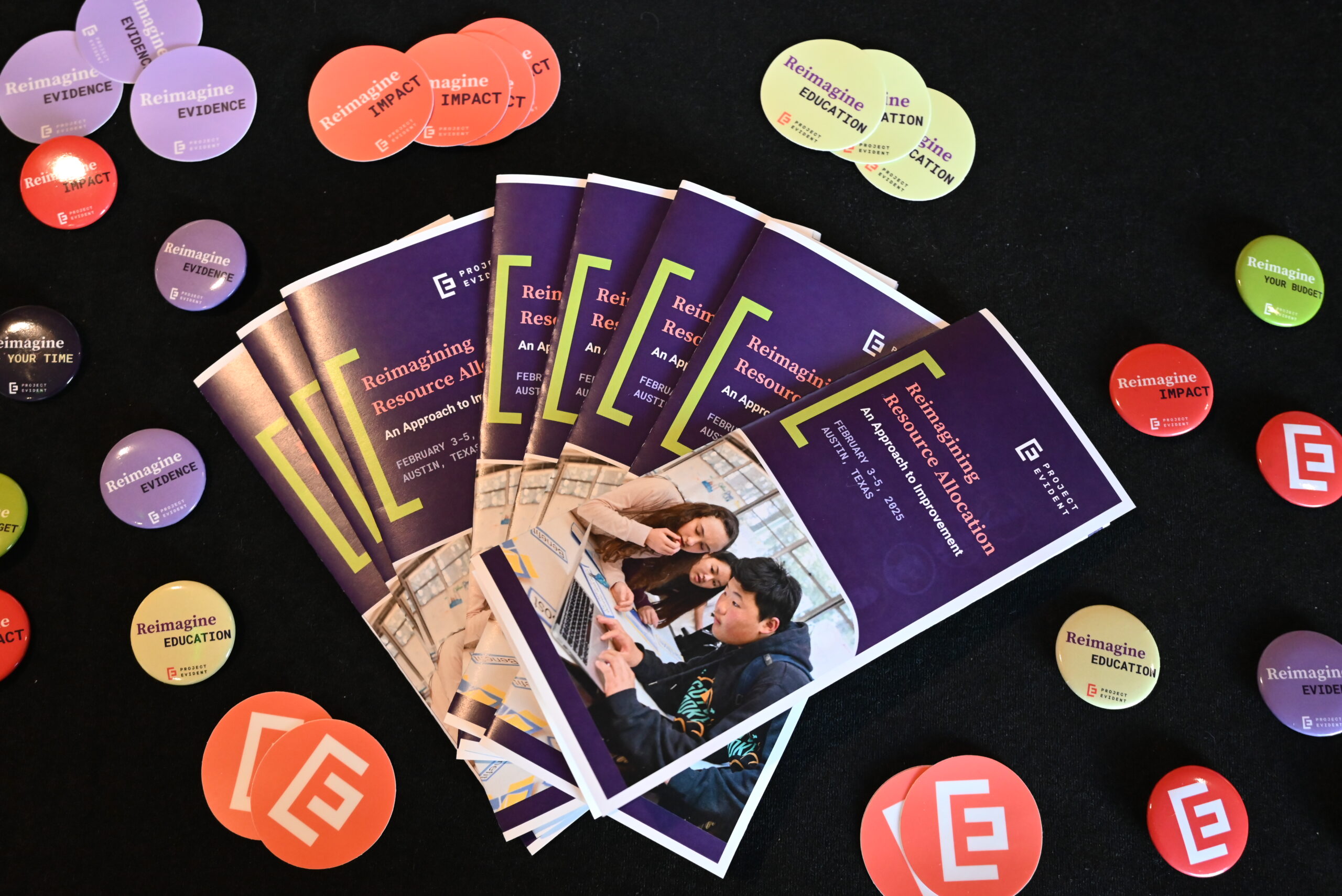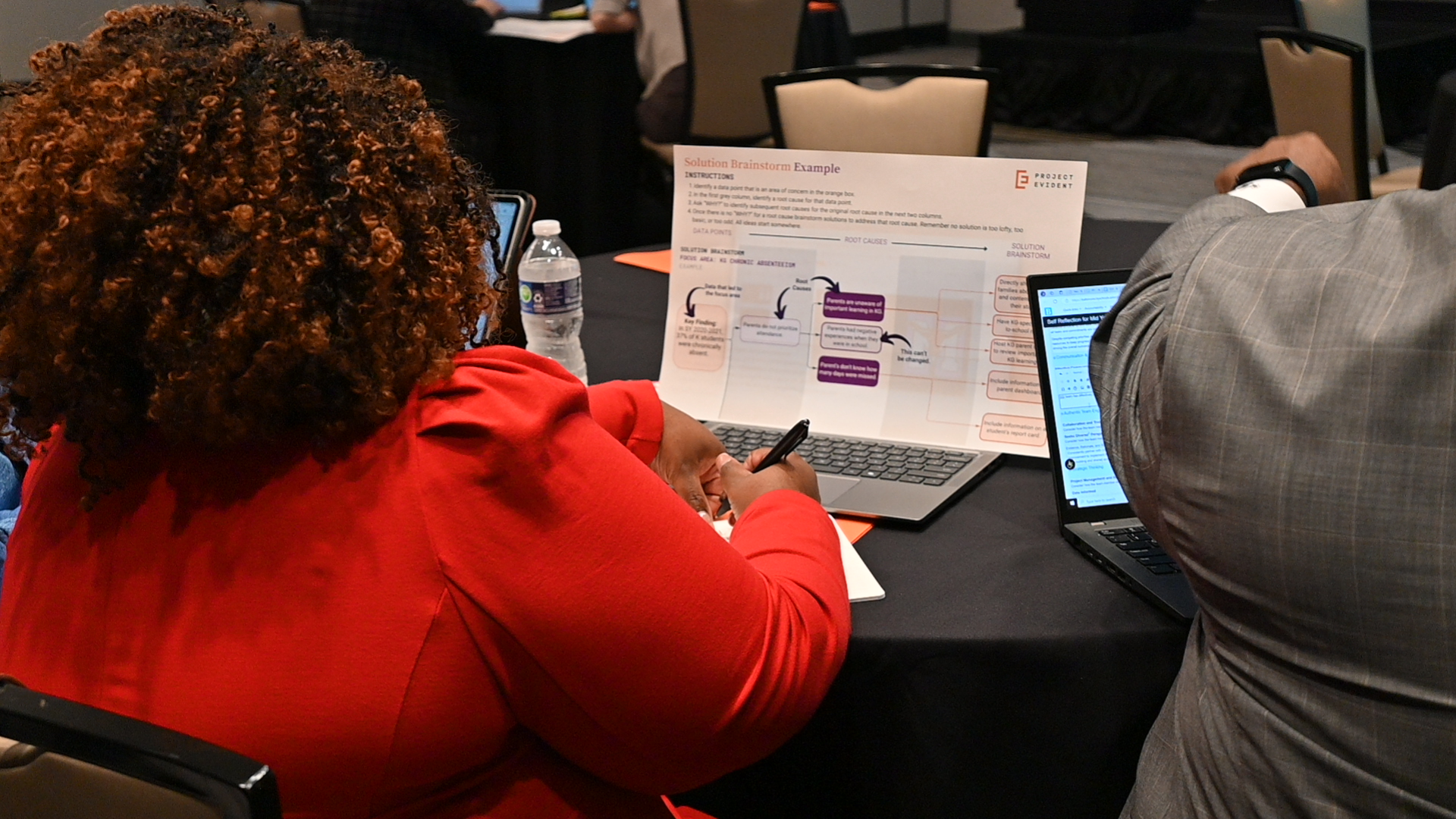Insights
The Power of Evidence: How Schools Are Reimagining Resource Allocation for Equitable Outcomes

Facing budget pressures and the urgent need to improve student outcomes, educational leaders gathered in Austin with a shared mission: to reimagine how resources–time, people, and money–are allocated. Project Evident’s Reimagining Resource Allocation Workshop offered a space for nearly 100 district leaders from as east as Baltimore City Public Schools to the West Coast’s Los Angeles Unified School District and from Rochester Public Schools in Northern Minnesota to Southern Florida’s Miami-Dade County Public Schools to discuss and create a launchpad for tangible change.
Set against a backdrop of persistent challenges—declining student performance, funding uncertainty, and widespread staffing shortages—this multi-day gathering served as both a grounding point and a springboard. With a sharp focus on using evidence to drive equitable outcomes, the workshop invited district leaders from throughout the United States to explore bold new strategies for sustainable improvement. The energy was high, the conversations were honest, and the sense of shared purpose was unmistakable.
Measuring Programmatic Effectiveness
At the core of the work stood evaluating programmatic effectiveness. Sessions prompted participants to ask critical questions, such as:
- “Is this initiative yielding the outcomes we expected?”
- “Is it worth the cost?”
Our Project Evident facilitators emphasized the hard truth that trade-off decision making—knowing when to scale, iterate, or discontinue an initiative—is essential to evidence-based leadership.
Sessions emphasized:
- Identifying areas of concern and root causes
- Designing and scoping solutions
- Understanding usage, dosage, and reach of initiatives
- Differentiating between short-term implementation indicators and long-term outcomes
- Designing multi-year financial models to account for sustainability
How does this translate to real-life implementation? Attendees learned to calculate all-in costs of initiatives, track usage and reach of current projects, and measure outcomes against investment. District leaders quickly realized the importance of tracking return on investment when considering the sustainability of initiatives. One district leader emphasized, “Extremely applicable content, with helpful examples and a useful activity. It provoked [a] serious conversation among my team on how we can change our monitoring and evaluation practices.”
In the end, more money, more time, or more resources do not always mean better outcomes. Reallocation of time, money, and people can often have a great impact on end results.
From Data to Design: Crafting Sustainable Solutions
As we moved into solution design, participants rolled up their sleeves in data-informed decision making and solution design sessions. Each district was provided data sets, curated by Project Evident’s data analysts from publicly available state-level achievement data, to pinpoint areas of concern. They then worked through identifying root causes, such as lack of clear expectations, to knowledge gaps in the community. After that, teams brainstormed initiatives and prioritized solutions using the Effort x Impact Matrix—a powerful tool to assess both feasibility and reach.

Participants walked away with:
- A refined focus area based on student data
- Prioritized, evidence-aligned solutions
- Clear implementation plans with timelines, responsibilities, and success metrics
These sessions affirmed that for solutions to be the most successful they must be student-centered, anchored in data, and designed with specific district priorities in mind. District leaders agreed, “Our district needs to be more systematic about decision making. The process described will be very helpful for us.”
A Systems-Wide Commitment to Change
The theme was clear: Real change demands more than good intentions. To truly enact change, district leaders must create intentional design, system-wide alignment, and sustainable models. Sustainability took center stage in the next step in the planning.
Allocation sessions explored:
- Budget allocation formulas and procurement timelines
- Human capital planning, from recruitment to professional development
- Instructional models and staffing ratios
- Facilities, transportation, and cross-departmental coordination
Attendees left these sessions with the clear understanding that aligning processes and timelines—such as enrollment projections, staffing, and budget forecasting—prevents silos, ensuring resources are available when and where they are needed most, creating the coherence necessary for meaningful and sustainable change for better student success. Leaders found they “can’t connect budget to improvement because we are doing budget before knowing what to improve,” which made them see that the practice of aligning several district functions with a focus on student outcomes was essential.
Action Is the Antidote to Uncertainty
In a time of fiscal uncertainty, staffing challenges, and heightened expectations for student success, this convening served as both a compass and a call to action.
The energy from Project Evident’s Education Agency Practice team’s Reimagining Resource Allocation Workshop was palpable—and this is just the beginning. District leaders left with clear priorities, sequenced solutions, and actionable next steps. Project Evident is committed to supporting districts as they translate these insights into tangible improvements for students. Whether through follow-up office hours with our team or internal planning meetings, the momentum is real.
